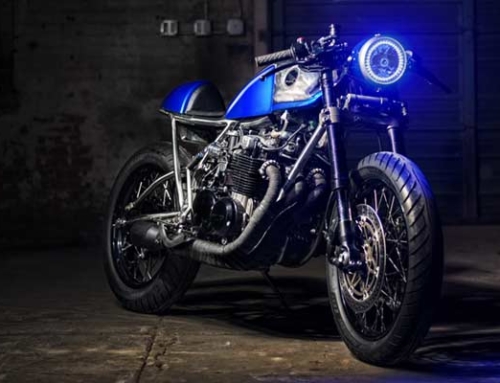
Discover the brilliance of HID lights for cars – efficient, long-lasting, and aesthetically pleasing. Illuminate your path with superior visibility and style on the road ahead. In the world of car lights, High-Intensity Discharge (HID) lights are like shining examples of new ideas. They’re super bright, last a long time, and use energy well, unlike the old-style halogen bulbs. HID lights make roads easier to see at night and make cars look more relaxed, too. They’re popular with people who love cars and the companies that make them. Let’s learn more about how HID lights work, why they’re great, and where they’re used.
Understanding HID Lights: Illuminating the Science
High-Intensity Discharge (HID) Lights
HID lights, called xenon headlights, work differently than regular halogen bulbs. Instead of a metal filament, HID lights have a unique mix of gases like xenon inside a quartz tube. When electricity flows through these gases, they light up, creating a bright beam. This makes HID lights much more colorful than standard bulbs.
Critical Components of HID Lights
- Xenon Gas: The primary element responsible for the intense light output of HID bulbs.
- Quartz Tube: Houses the xenon gas and withstands high temperatures generated during operation.
- Electrodes: Facilitate the flow of electrical current, initiating the ionization process within the xenon gas.
- Ballast: Regulates the voltage supplied to the HID bulb, ensuring stable and consistent illumination.
Advantages of HID Lights: Brightening the Road Ahead
1. Enhanced Visibility
HID lights have a significant advantage because they’re bright and clear. This makes it much easier to see when you’re driving at night. The light they give off is white and firm, just like daylight. This helps drivers see better, reduces the strain on their eyes, and helps them react faster to what’s happening on the road.
2. Energy Efficiency
HID lights are better than halogen bulbs in a few ways. They use less power but shine much brighter. This means they don’t put as much stress on a car’s electrical system and can even help save fuel. So, choosing HID lights is good for the environment and your car’s overall performance.
3. Longevity
HID bulbs last a lot longer than regular halogen ones. This is because they don’t have a filament that can break easily from bumps or vibrations. So, you won’t need to change HID bulbs as often as halogen ones. This means fewer trips to the auto shop and less money spent on maintenance in the long run.
4. Aesthetic Appeal
HID lights don’t just help you see better; they also make your car look more relaxed. Their bright, white light makes your car look more modern and stylish. It’s like adding a special touch that makes your vehicle stand out and look good when driving around.
Applications of HID Lights: From Automotive to Beyond
1. Automotive Lighting
Car makers were quick to use HID technology, especially for headlights. HID headlights improve visibility and make driving safer, so they’ve become popular with both car companies and people who want to upgrade their cars. Besides headlights, HID bulbs are also used for fog lights, high beams, and extra lights on off-road vehicles. It’s a versatile technology used in many ways to make driving easier and safer.
2. Architectural Lighting
HID lights aren’t just for cars but also for architecture and outdoor lighting. HID lamps often light up big outdoor areas like stadiums, parking lots, and parks. They’re great for this because they’re bright and can shine a long way, ensuring everything is well-lit and safe at night.
3. Industrial and Commercial Lighting
HID lights are trusted for being dependable and energy-efficient in places like factories and warehouses. They give off plenty of light, making it easier for people to work safely and efficiently. Whether in a big warehouse or a busy factory, HID lights help workers see clearly, boosting productivity and keeping everyone safe.
Conclusion: Shining a Light on HID Technology
To sum up, HID lights are a big step forward in lighting. They’re super bright, energy-efficient, and last a long time. Whether lighting up roads or making buildings look stunning, HID lights make our world more colorful and better. As more people in the car world and other industries see how great HID lights are, we can expect even more amazing things in the future.
FAQs
- Are HID lights legal for use in my car?
HID lights are legal in many regions but may require specific regulations regarding color temperature and beam patterns. Could you check local laws for compliance?
- Do you know if HID lights require particular installation?
While HID conversion kits are available for retrofitting, professional installation is recommended due to the need for ballasts and adjustments for optimal performance.
- Can I replace my halogen bulbs with HID lights?
Yes, HID conversion kits are designed to replace halogen bulbs. However, please ensure it’s compatible with your vehicle’s lighting system and consult a professional for installation.
- Do HID lights consume more power than halogen bulbs?
No, HID lights are more energy-efficient than halogen bulbs. They produce brighter illumination while consuming less power, improving fuel economy and reducing strain on the electrical system.
- What are the common issues with HID lights?
Common issues include flickering, color shifting, and bulb failure. Proper installation, quality components, and regular maintenance can help mitigate these issues for optimal performance.





